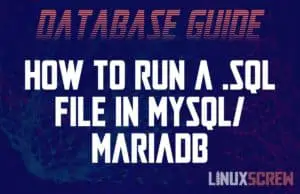Home » Programming
How to Import a CSV File to PostgreSQL
This tutorial will show you how to import data from a CSV file into a PostgreSQL database table. What is a CSV File A CSV (Comma Separated Values) file is a text file that contains tabulated information. The rows in this data each take up a line in the text file, while the values in each column on each row are separated by a comma – hence, comma-separated. CSV files are versatile. Because the data within is stored as plain text, they can be opened … Read more






![Python setAttr() - What it Does and How to Use It [Examples] 6 Python use setattr() to set object attributes](https://cd.linuxscrew.com/wp-content/uploads/2022/08/Python-use-setattr-to-set-object-attributes-300x194.jpg)
![JavaScript for Loops - How to Use Them [Examples] 7 How to use for loops in JavaScript](https://cd.linuxscrew.com/wp-content/uploads/2022/08/How-to-use-for-loops-in-JavaScript-300x194.jpg)

![How to Sort a Dictionary by Value in Python [Examples] 9 Python sort dictionary by value](https://cd.linuxscrew.com/wp-content/uploads/2022/08/Python-sort-dictionary-by-value-300x194.jpg)
